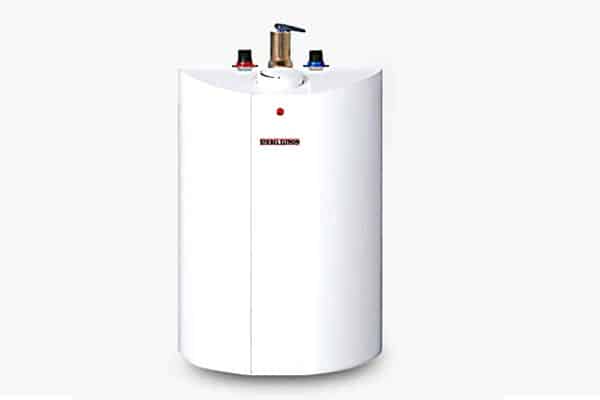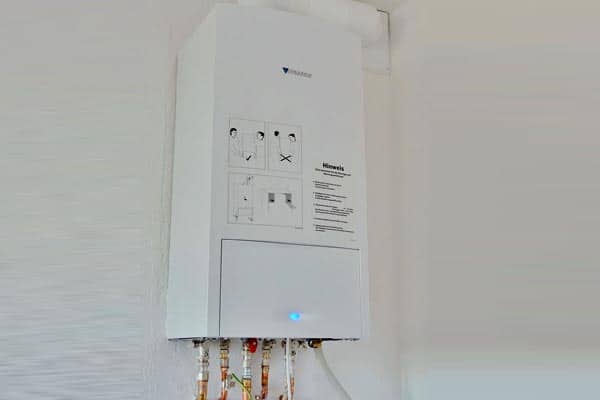How Long It’ll Take to Drain a Hot Water Heater
So, you think that you need to drain your water heater, but the process will differ slightly depending on which type of water heater you have, why you want to drain it, and how hard your water is. It can also be a more intimidating task to take on, so knowing what to expect is key.
How Long Does it Take to Drain a Water Heater?
Draining your water heater is something you want to make a point to do at least once a year to ensure that your hot water heater runs in top shape.
The draining process is relatively quick, and it shouldn’t take more than 15 minutes, depending on the size of your tank. However, prep work can take longer, so you could dedicate a whole day to this process.
Luckily for you, we’re going to break down why you should drain a water heater, why the mineral content of the water is important, hot water versus electric, and outline the draining process all in this simple guide. You’ll be able to use it in your own home without an issue.
Why It’s Important to Drain Your Hot Water Heater
You need to drain your water heater because it either has a clog or you want to perform preventative maintenance on it.
The water heater unit will intake water from the main water line that contains various sediments like gravel, sand, mineral deposits, and dirt. Clogs in your water heater happen much more frequently when you don’t routinely flush the system.
This isn’t good because if you were to drain your water heater, it can extend the unit’s lifespan and lower your energy bills because unclogged units don’t have to work as hard to run.
Most manufacturers of hot water heaters recommend that you drain your water heater frequently, and the frequency gets determined by how high the mineral content is in your particular area.
Find Out the Mineral Content of the Water in Your Area
If you’re not aware of your quality of water, you can get a home water quality test kit without spending a lot of money on it.
Most of these kits will give you readings for lead, bacteria, hardness, chlorine, and pH. You’ll be most interested in water hardness because this is the amount of dissolved magnesium and calcium in your water, and the water will be harder if you have more dissolved minerals.
The ratings are as follows:
- Soft Water – Less than 60 mg/L
- Moderately Hard – 61 to 120 mg/L
- Hard – 121 to 180 mg/L
- Very Hard – Over 180 mg/L
So, how often should you flush out your hot water heater? In areas where the water hardness falls inside normal ranges, it’s about one time a year. If your waterfalls into the hard or very hard category, you will want to flush the system at least twice a year, once every six months.
If You Have a Water Softener, Do You Need to Drain Your Water Heater?
You won’t need to drain your hot water heater as frequently if you have soft water as you would if you have hard water; it’s still a good idea to drain it at least once a year.
Even soft water comes with trace amounts of magnesium and calcium in it, and they can leave deposits in your unit when they heat up. This puts you at risk for an inefficient water heater or clogs.
How You Flush Water Heaters – The Drain Valve
Preventing and repairing clogs in your system requires flushing, and flushing needs you to have a working water heater drain valve.
The valves can be either plastic or brass, and they’re usually found on the bottom of the water heater.
The open end of the valve sticks in your water heater, and water will drain out of the nozzle when you loosen the knob.
Gas Versus Electric – Flushing the Hot Water Heater
Starting the draining process is the big difference between electric and gas units. For gas units, you’re going to turn your valve until it’s into the off position, while electric water heaters require you to find your circuit breaker and switch the power off.
Once you have the electricity or gas turned off, and you can turn off your cold water intake valve. You don’t want any water entering the tank when you’re going to drain it.
The Draining Process – Step-by-Step
Once you shut your electricity or gas shut down and your intake valve switched off, you’re going to allow your water to cool because most water heaters get set between 120 and 140°F.
You could get third-degree burns from the water this hot, so it’s essential that you allow it to cool down before you move onto the draining process.
Step One – Cutting Off the Water Supply
When you’re trying to figure out how long it takes to drain your water heater, you first have to figure out how to drain the actual tank.
This will vary from the heater to heater, but the general process is:
- Electric Water Heater – Switch the power off on your electric water heater and tape the breaker at the off position. If you were lucky, the plumber, electrician, or builder could have installed a dedicated outlet for this unit, so all you’d have to do is unplug it. If you don’t switch off the power one way or another and you accidentally expose your heating elements to water, you can burn them out.
- Gas Water Heater There are two ways you could go here. You could turn the gas off, or you could turn the gas and the pilot off. Which one you pick will come down to personal preferences.
Step Two – Turn Off Your Tank’s Cold Water Supply
The next step is simple enough to figure out because your cold water supply valve is usually right next to the ‘on’ switch on your water heater.
Look at tankless water heater reviews to help avoid a problem since they don’t work on the basis of storing water. Turn the valve to the off position.
Step Three – Attach Your Garden Hose to the Drain Valve
You’ll usually find the drain valve at the bottom of the tank, and you want to get a high-quality garden hose and attach it to the valve.
Cheap hoses will tend to turn soft and are prone to leaking when you run hot water through them. Just make sure you direct your hose to a drain instead of into a crawl space.
If this should happen and you don’t have a drain, or the drain is in a higher position than your water heater is, you can use the bucket brigade and take the water out a bucket at a time. A second option is to buy a pump that will push the water out of the house.
Step Four – Drain the Water
The first thing you want to do is to open the hot water faucet first, and then you should open the drain valve on the water heater.
Once you do this, you want to open the hot water side of any faucet in your home. Next, open up your drain valve on your hot water tank and allow it to flow until it gets empty.
Depending on the water pressure and the size of the hose, you should get between 9 and 17 gallons per minute for a flow rate.
If you have a tank that is 50 gallons, the water should flow for three to six minutes at full pressure.
If the water has a slow flow to it, you should turn on the cold water supply on the tank to help you blast through any clogs and drain the tank.
Step Five – Rinse and Repeat
When the tank finally empties, you want to shut off the drain valve and turn the cold water supply and let the water heater fill back up.
Once your tank gets partially filled to the halfway point, start the draining process once again.
When the water supply starts flowing out, you want to turn the water supply off. If there is a lot of sediment in the tank, you may have to repeat the steps a few more times until the water runs clear.
Why Vinegar Works for Water Heater Maintenance
A lot of people choose to use vinegar to clean their hot water heater instead of more harsh chemicals because the water from this unit is what fills your bathtubs, faucets, sinks, and more.
You should choose to use undiluted white vinegar if you choose to use vinegar, and you can’t safely swap it out for any other type of vinegar. Dump it in, let it sit for a few hours, drain it, refill it with clean water, and switch it back on regularly.
Bottom Line
Draining your hot water heater doesn’t have to be a huge project, but you should still set aside a full day to take it on if you’ve never done it before.
We’ve outlined the process, important factors to consider, and how to maintain your hot water heater to prevent clogs. You can use this information to ensure your unit works in top shape all of the time.






